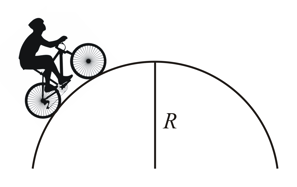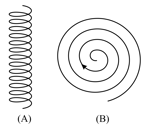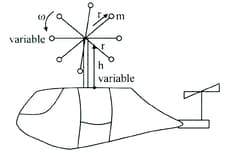Umakant Kondapure, Collin Fernandes, Nipun Bhatia, Vikram Bathula and, Ketki Deshpande Solutions for Chapter: Circular Motion, Exercise 4: Evaluation Test
Umakant Kondapure Physics Solutions for Exercise - Umakant Kondapure, Collin Fernandes, Nipun Bhatia, Vikram Bathula and, Ketki Deshpande Solutions for Chapter: Circular Motion, Exercise 4: Evaluation Test
Attempt the practice questions on Chapter 9: Circular Motion, Exercise 4: Evaluation Test with hints and solutions to strengthen your understanding. MHT-CET TRIUMPH Physics Multiple Choice Questions Part - 1 Based on Std. XI & XII Syllabus of MHT-CET solutions are prepared by Experienced Embibe Experts.
Questions from Umakant Kondapure, Collin Fernandes, Nipun Bhatia, Vikram Bathula and, Ketki Deshpande Solutions for Chapter: Circular Motion, Exercise 4: Evaluation Test with Hints & Solutions
A cyclist is going on an overbridge with constant speed. The value of frictional force acting on the cycle

For the given situation as shown in the graph, the initial angular velocity of the particle is What will be the final angular velocity if the particle follows the given graph?

A particle is going in a uniform helical and spiral path separately below with constant speed as shown in the figure.

The metro which has been recently introduced in Mumbai encounters a sharp turn between Andheri and Chakala. To avoid any derailing issues, the authorities thought of banking the rails. The turn is of a radius of and the maximum speed attained by Mumbai metro is. If the distance between the rails is then through what height should the outer rail be raised?
For a particle moving in a circle,
A helicopter was designed at in which there was a different system to keep the helicopter stable at a height. The radius of the masses and the angular velocity of rotation can be varied (see figure). The mass of each bob is and the number of bobs is .

A chain of mass and radius placed on a smooth table is revolving with about a vertical axis coinciding with the symmetry axis of the chain. Find tension in the chain.
A ball suspended by a thread swing in a vertical plane so that its acceleration values at the extreme and lowest positions are equal. Find the thread deflection angle at extreme position.
